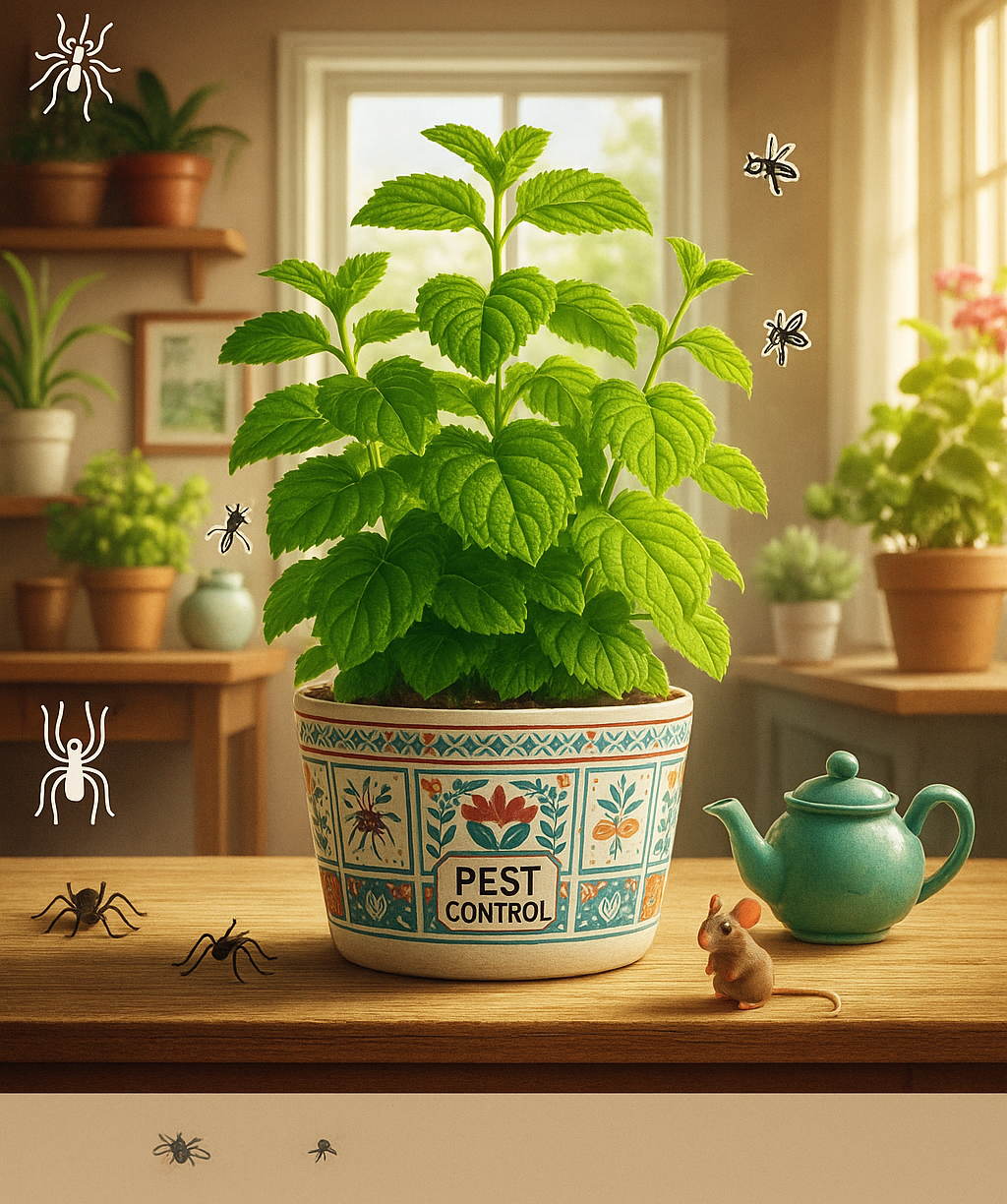In a time where chemical pesticides are common in households, many people are turning to safer, more natural ways to protect their homes from pests. One of the most effective and eco-friendly solutions is using certain plants that naturally repel unwanted intruders. Among these, peppermint (Mentha piperita) stands out as a powerful, beautiful, and safe option for pest control.
Why Peppermint is a Game-Changer
Peppermint is more than just a flavorful herb—it’s a natural guardian against spiders, insects, and even mice. With its bright green leaves and sharp, cooling aroma, this member of the mint family is not only pleasing to the senses but also a powerful pest deterrent. Its refreshing scent contains menthol, a compound that pests find intolerable.
Spiders Hate It:
Spiders rely on their sense of smell to navigate, and the strong menthol scent of peppermint overwhelms their senses. Planting peppermint near windows, under furniture, or in dark corners can help drive them away, creating a space they instinctively avoid.
A Natural Barrier Against Mice
Mice have an excellent sense of smell, which they use to find food and shelter. Peppermint’s intense scent confuses and repels them. Placing peppermint near entry points—like cracks, doors, or attic spaces—can discourage mice from entering. It’s a non-toxic, pet-safe method that keeps rodents away naturally.
Insects Can’t Stand It:
Whether it’s ants, flies, or mosquitoes, many household bugs are sensitive to peppermint’s aroma. Its essential oils disrupt their navigation and make it hard for them to find food or breeding areas. By keeping peppermint in the kitchen, near trash bins, or any bug-prone area, you’ll notice a clear reduction in pest activity.
The Science Behind the Scent
Menthol, found in high concentrations in peppermint, interferes with pest nerve receptors. Research has shown that it can block or confuse the neurological signals insects use to move and respond. This causes disorientation and makes your home an unfriendly place for pests without harming your family or the environment.
Easy to Grow and Maintain
Peppermint is low-maintenance and perfect for beginners. It thrives in containers or garden beds with moist, well-drained soil and partial sunlight. Indoors, it adapts well to windowsills or countertops. Regular watering and occasional trimming will keep the plant healthy and full, maximizing its pest-repelling power.
Best Spots to Place Peppermint
For optimal results, place peppermint plants in high-risk pest areas—near windows, doors, corners, or vents. Spreading several pots around the home creates an invisible shield that pests won’t dare cross.
Bonus Benefits
In addition to being a natural pesticide, peppermint improves indoor air with its fresh scent, promotes calmness, and can even boost concentration. It’s known to reduce stress and lift your mood—making it a lovely addition to your living space both visually and aromatically.
Final Thoughts
Peppermint offers a simple, effective, and natural way to keep your home pest-free. Say goodbye to harmful chemicals and hello to a plant that not only protects your space but enhances it. From repelling bugs to freshening the air, peppermint is the perfect green solution for a healthier, happier home.
